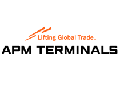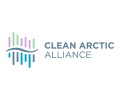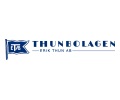Emissions trading begins to bite
 Emission trading systems (ETS) are “cap and trade” schemes that permit the emission of greenhouse gases in exchange for allowances. They are just one part of the ever-expanding web of environmental measures that are impacting the shipping industry with the aim of ensuring greater efficiency and more environmentally friendly shipping, particularly in reducing emissions.
Emission trading systems (ETS) are “cap and trade” schemes that permit the emission of greenhouse gases in exchange for allowances. They are just one part of the ever-expanding web of environmental measures that are impacting the shipping industry with the aim of ensuring greater efficiency and more environmentally friendly shipping, particularly in reducing emissions.
IMO administrations are trying to do their bit with the introduction of EEXI and CII, on which we have written several articles, the latest one on CII here. However, whereas industry feedback on CII suggests that it may not have the impact originally intended, the EU ETS has teeth and it is important that shipping companies understand what it entails and how to ensure compliance.
In the absence of a global scheme, other emission trading schemes may come to the fore over time but currently the world’s largest ETS is operated by the European Union, which recently added the shipping industry. Over time the quantity of allowances available to the industry shall be reduced as an incentive to reduce emissions through increased efficiency and the use of alternative fuels.
Overview
The Emissions Trading Scheme is the European Union’s comprehensive initiative to create a system with the aim and effect of reducing greenhouse gas emissions. The EU has introduced the scheme over a series of ‘phases’ since 2005, with the scheme now in its fourth phase.
Although the maritime sector was for some time excluded from its application, that has now changed following the findings of the Intergovernmental Panel on Climate Change’s Sixth Assessment Report. This found that global warming could only be limited to the Paris Agreement’s target (of limiting global warming to well below 2 °C with efforts to limit it to 1.5 °C) if urgent, strong and sustained reductions in global greenhouse gas emissions were taken within the decade.
In order to reach the objectives of the Paris Agreement, together with the EU’s commitment to i) reduce the Union’s net greenhouse gas emissions by 55% compared to 1990 levels by 2030, and ii) economy-wide climate neutrality by 2050, the scope of the EU ETS was expanded to include, by Directive 2023/959, the maritime sector.
What is the ETS?
The EU Emissions Trading System (“EU ETS”) is a ‘cap-and-trade’ system. The ‘cap’ is a threshold, describing the total amount of greenhouse gases that can be emitted by the relevant Shipping Company (as defined by the regulations – see below in this regard). Within the cap, companies receive or buy emission allowances, which they can trade as necessary.
Each allowance gives the holder the right to emit:
one tonne of carbon dioxide (CO2), or
the equivalent amount of other powerful greenhouse gases, nitrous oxide (N2O) and perfluorocarbons (PFCs).
The cap is reduced annually to continually bring the EU’s emissions down in line with its climate targets. Companies caught within the scope of the ETS are not allowed to generate more greenhouse gas emissions than their allowances can cover. If they do, heavy fines are imposed. This means that, unlike CII in its current form, the ETS has teeth to penalise shipping companies operating vessels within its waters.
Who does this affect?
Directive 2003/83/EC (as amended) expressly provides that the ‘Shipping Company’ is responsible for ensuring compliance with the EU ETS. Article 3 of this Directive defines the ‘Shipping Company’ as:
‘the shipowner or any other organisation or person, such as the manager or the bareboat charterer, that has assumed the responsibility for the operation of the ship from the shipowner and that, on assuming such responsibility, has agreed to take over all the duties and responsibilities imposed by the International Management Code for the Safe Operation of Ships and for Pollution Prevention, set out in Annex I to Regulation (EC) No 336/2006 of the European Parliament and of the Council…’
The responsible party is, therefore, the ship owner or, if a different party has assumed responsibility for the operation of the ship pursuant to the ISM code – then that party. That second party would likely be the vessel’s technical manager, conferring on it a range of responsibilities. It has, however, been recognised that this places a significant burden, uncertainty, and potentially an undesired liability on the ship manager.
Recognising the potential extent of that burden, and with a view to providing greater clarity on who, in fact, is the responsible party, the EU Commission has published a draft implementing legislation titled ‘Commission Implementing Regulation (EU) laying down rules for the application of Directive 2003/87/EC… as regards the administration of shipping companies by… authorities in respect of a shipping company.’ This draft implementing legislation – which is not yet in force – will, if passed, clarify that the responsible party is the ship owner, unless the parties have agreed and formally documented that the Manager is to assume that responsibility.
The EU recognises, however, that in cases where the responsibility for the purchase of the fuel and/or the operation of the ship is assumed by an entity other than the Shipping Company (i.e. the ship owner) pursuant to a contractual arrangement, the Shipping Company is entitled to reimbursement from that entity for the costs arising from the surrendering of allowances. In other words, in the usual shipping scenario of a charterer time chartering the vessel from a ship owner and purchasing the fuel and effectively taking over the operation of the vessel in determining the route, cargo and speed of the ship, the EU is attempting to implement rules by which the ship owner can be reimbursed for the surrendering of allowances by the charterers as matter of law. The directive is that EU Member States must take national measures to ensure that the shipping company is entitled to reimbursement in such situations and must provide the corresponding access to justice to enforce that entitlement.
Therefore, whilst on the face of it, a ship owner is “on the front line” in having to surrender allowances and remains the responsible entity for surrendering allowances, the ultimate liability is likely to lie with the time charterer who owns the bunkers.
Although this entitlement to reimbursement should be made effective by EU Member States regardless of contractual arrangements, the EU expects that ship owners and charterers will develop contractual clauses to pass on the ETS surrendering costs as appropriate.
Bimco ETS Clause
Whilst on the face of it, a ship owner is likely to be the responsible party, commercial parties are free to apportion these costs and liabilities by agreement and, as above, the EU expects parties to do so. After all, it could be said that the owners of the bunkers being consumed, namely the time charterers (or the bottom time charterer in a chain of contracts) are the “polluting party” and it is the burning of their fuel which is releasing emissions.
Bimco has drafted the “ETS – EMISSION TRADING SCHEME ALLOWANCES CLAUSE FOR TIME CHARTER PARTIES 2022”, which again unlike the BIMCO CII Time Charter clause, is being more widely adopted, or similar variations are being used, not least because the EU expects this.
Consistent with the approach that the responsibility for the emissions produced by burning those bunkers is with the charterers, Bimco’s ETS Clause establishes the time charterers’ responsibility to “provide and pay for” allowances corresponding to the ship’s emissions during the time charter period. The clause works on the principle of transferring actual allowances as opposed to reimbursing the owners for the cost of allowances to avoid complications with price fluctuations. This takes matters a little further than the EU’s recommendations. The charterers are obliged to transfer allowances to the owners’ emission scheme account monthly following receipt of the owners’ data and calculations showing the quantity of allowances due for that period.
When the ship is due to be redelivered and the remaining period is less than a month, the owners must provide the charterers with an estimated quantity of allowances. In the event of a discrepancy between the estimated and actual quantities, the owners are to return any excess to the charterers, or the charterers are to transfer the difference to the owners.
In the same way that the cost of any bunkers used by the owners during off-hire periods is effectively repaid by the owners to the charterers and highlighted in the parties’ hire statements, the allowances to cover the emissions from the bunkers used by the owners during off-hire must also be returned to the charterers. This is proposed to be done either by deducting the amount of allowances from the subsequent months’ transfer of allowances or by the owners transferring the amount of allowances for the emissions they made back to the charterers. Either way, these allowances must be factored in as an additional cost in addition to hire, bunkers etc during any off-hire disputes.
We are aware of charterers who have been purchasing emission allowances for future EU trading and it is prudent to do so in circumstances where it will be expected that the charterers either provide those allowances in respect of the vessel’s EU trading or they will have to reimburse the ship owner for the costs of its own allowance being utilised.
What does this affect?
Specific routes
The EU ETS applies irrespective of the vessel’s flag. It is, however, route based, and applies to:
100% of the emissions from ships performing voyages which depart from a port ‘under the jurisdiction of an EU Member State’ and arrive at a port ‘under the jurisdiction of an EU Member State’.
100% of the emissions from ships within a port under the jurisdiction of an EU Member State.
50% of emissions from ships performing voyages departing from a port under the jurisdiction of an EU Member State and arriving at a port outside the EU (the example given by the EU’s FAQs include a voyage from Rotterdam to Shanghai)
50% of emissions from ships performing voyages outside the jurisdiction of an EU Member State and arriving at a port within the jurisdiction of an EU Member State (i.e. Shanghai to Rotterdam)
Gradual implementation
However, these requirements will be phased in gradually, with the relevant Shipping Company needing to ensure the following:
In 2025: that 40% of the emissions it reports for the year 2024 are covered by emission allowances. It is therefore important that the Shipping Company records its emissions this year, 2024, and cover at least 40% of such reported emissions.
In 2026: that 70% of the emissions it reports for the year 2025 are covered by emission allowances.
In 2027 and beyond: that 100% of the emissions it reports for the year 2027 (and sequentially thereafter) are covered by emission allowances.
Similarly, only certain types of greenhouse gasses are captured within the scope of the ETS. These are:
As of 2024, Carbon Dioxide (CO2), and
As of 2026, Methane (CH4) and Nitrous Oxide (N20)
However, it should be noted that there are specific reporting requirements which kick in before these dates – as set out in further detail below.
Types of vessels
The EU ETS also applies to specific types of ships only. From 2024, cargo and passenger ships of or above 5000 GT are captured within its scope, while from 2027, offshore ships of or above 5000 GT will also need to ensure compliance.
Note that ships with ice-class IA, IA Super or equivalent have a dispensation until 31 December 2030, where they are required to surrender a reduced quantity of allowances.
Reporting requirements
The EU has also implemented, in conjunction with the EU ETS, Regulation (EU) 2023/957 which imposes on the maritime transport sector certain monitoring, reporting and verification obligations, particularly in respect of greenhouse gas emissions (the “MRV”).
The MRV is also now in force. Pursuant to the MRV, Shipping Companies are required to have a plan for the monitoring and reporting of yearly emissions. Every year, the Shipping Company must produce and submit a report for each ship under its responsibility, as well as a report at company level. Note that the monitoring plan must be assessed as conforming with the regulations by an independent verifier before 1 April 2024, or no later than three months after each ship’s first call in a port under the jurisdiction of an EU Member State.
The data for each year must be verified by a ‘verifier’ (who is accredited) by 31 March of the following year. Once that data has been verified, the Shipping Company must then ‘surrender’ (the term used to mean to ‘use’) the required number of allowances by 30 September of that year.
As of 1 January 2024, shipping companies with vessels of 5,000 GT or above must (in respect of the relevant routes described above) comply with the MRV. Those companies will need to monitor, from 1 January 2024 their CO2, CH4 and N2O emissions.
Penalties
The penalties for failing to surrender allowances can be significant. Shipping companies which fail to comply are liable to an excess emissions penalty of EUR 100 per tonne of CO2 equivalent and are still liable to surrender the required number of allowances. Details of the companies in breach will also be published.
If the shipping company fails to comply for two or more consecutive periods, it may also risk being the subject of an expulsion order. This would have the effect of seeing vessels under the responsibility of that company being refused entry to potentially every EU Member State, until it fulfils its surrendering obligations.
A ship owner faced with a defaulting charterer who has not transferred any or sufficient allowances as per the charterparty, is faced with a decision to make but may have to use and surrender its own allowances, as the party responsible as per EU regulations, and seek reimbursement from its charterer thereafter, otherwise the ship owner itself risks the above sanctions. Indeed, a failure by a ship owner to deal with allowances properly despite non-compliance by its charterer, would also open up a risk that the owner failed to properly mitigate its loss arising from charterers’ contractual breaches meaning that, in circumstances where fines and other liabilities could have been avoided, the losses remain with the owner.
Summary
The EU ETS is now in force, and each Shipping Company which engages in the affected trades must ensure compliance with the relevant regulations – particularly as the repercussions of not doing so are significant. Shipowners, charterers and technical managers must also ensure that they understand which party is contractually responsible for compliance with the relevant regulations, and – perhaps most importantly – who bears the financial cost for the relevant allowances in any given scenario.
Source: Campbell Johnson Clark

 Hellenic Shipping News Worldwide Hellenic Shipping News Worldwide, Online Daily Newspaper on Hellenic and International Shipping
Hellenic Shipping News Worldwide Hellenic Shipping News Worldwide, Online Daily Newspaper on Hellenic and International Shipping





















 PG-Software
PG-Software